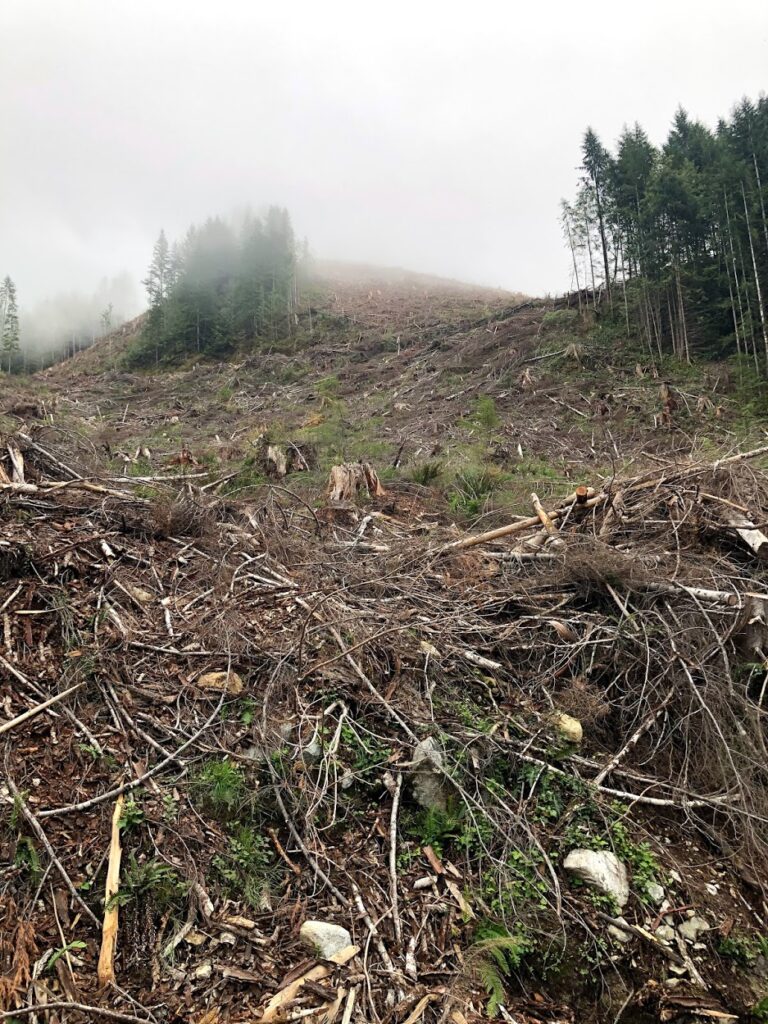Felix Pretis, Department of Economics, University of Victoria & Nuffield College, University of Oxford, Mach 25, 2021.
Logging old growth forest in Fairy Creek (and wider BC) makes little economic sense due to uncertainty about the environmental costs combined with the irreversibility of damages. Protesters have raised many arguments to save Fairy Creek, ranging from protecting the watershed to saving the trees for future generations. Opposing arguments have been raised supporting extraction, appealing to the commercial value of the lumber and the fact that there exists protection for old growth in other regions. It is flawed thinking to assume that these two sides can simply be weighed against each other. This is because there is substantial uncertainty about the environmental costs of harvesting of old growth, which is, for all practical purposes, irreversible. This uncertainty combined with irreversibility of damages makes a strong economic case for the protection, and thus against extraction.

If we knew the exact environmental costs of harvesting old growth, then the optimal harvesting decision will depend on the balance of these environmental costs relative to the commercial benefits of harvesting. In other words, if we knew the exact value of not-harvesting Fairy Creek – such as increased tourism in the Port Renfrew area, as well as the general existence value (e.g. the people of BC and elsewhere valuing the mere fact that old growth forest exists), then we could make an informed decision and weigh these costs against the commercial value of the extracted and processed old growth lumber.
The fact, however, is that we do not know the exact value of the environmental costs of harvesting old growth, and that any harvesting is irreversible. This uncertainty about the actual costs together with irreversibility of damages distorts conventional cost benefit analyses (see e.g. Costello and Kolstad 2015). There is asymmetry in the decision to harvest the old growth in Fairy Creek and wider BC: deciding to postpone harvesting until better information about the societal value becomes available does not forfeit the resource. But acting now and harvesting old growth, induces irreversible damage. Any uncertainty over these costs should lead to a delay of resource extraction until better information arrives. In other words, if there is even a small chance that the non-commercial value of old growth is large (i.e. if the benefits to the tourism industry in Port Renfrew and the existence value of the citizens of BC and beyond are high), then extracting now – which causes irreversible damage – is not optimal from an economic point of view and comes with a non-zero chance of a catastrophic loss from a societal standpoint.
While this economic argument might sound far removed from reality, BC is already learning about the existence value of old growth forests. The recent old growth review (“A new future for old forests”) provides evidence that the non-commercial value of old growth is likely very high. During the ‘War in the Woods’ over the logging of Clayoquot Sound, there was debate about the value of old growth and the lost revenue of forgoing the harvest (counter protesters were concerned about the lost commercial value). Nearly 30 years on, we have improved our understanding of the value of the resources there. Is there regret about protecting Clayoquot Sound? While we do not observe the counterfactual of what would have happened in absence of protection, it seems unlikely that Tofino and the surrounding areas would be better off under wide-spread logging. A similar learning process about the value of old growth may take place for Fairy Creek near Port Renfrew and BC in general. Cutting it now, would irreversibly take this option away and thus makes little economic sense.
Note: This letter was written in response to the Fairy Creek Protests and a shorter version has been published in the Capital Daily letters to the editor.
References:
Costello, C., & Kolstad, C. D. (2015). Mining and quasi-option value. National Bureau of Economic Research. 10.3386/w21325